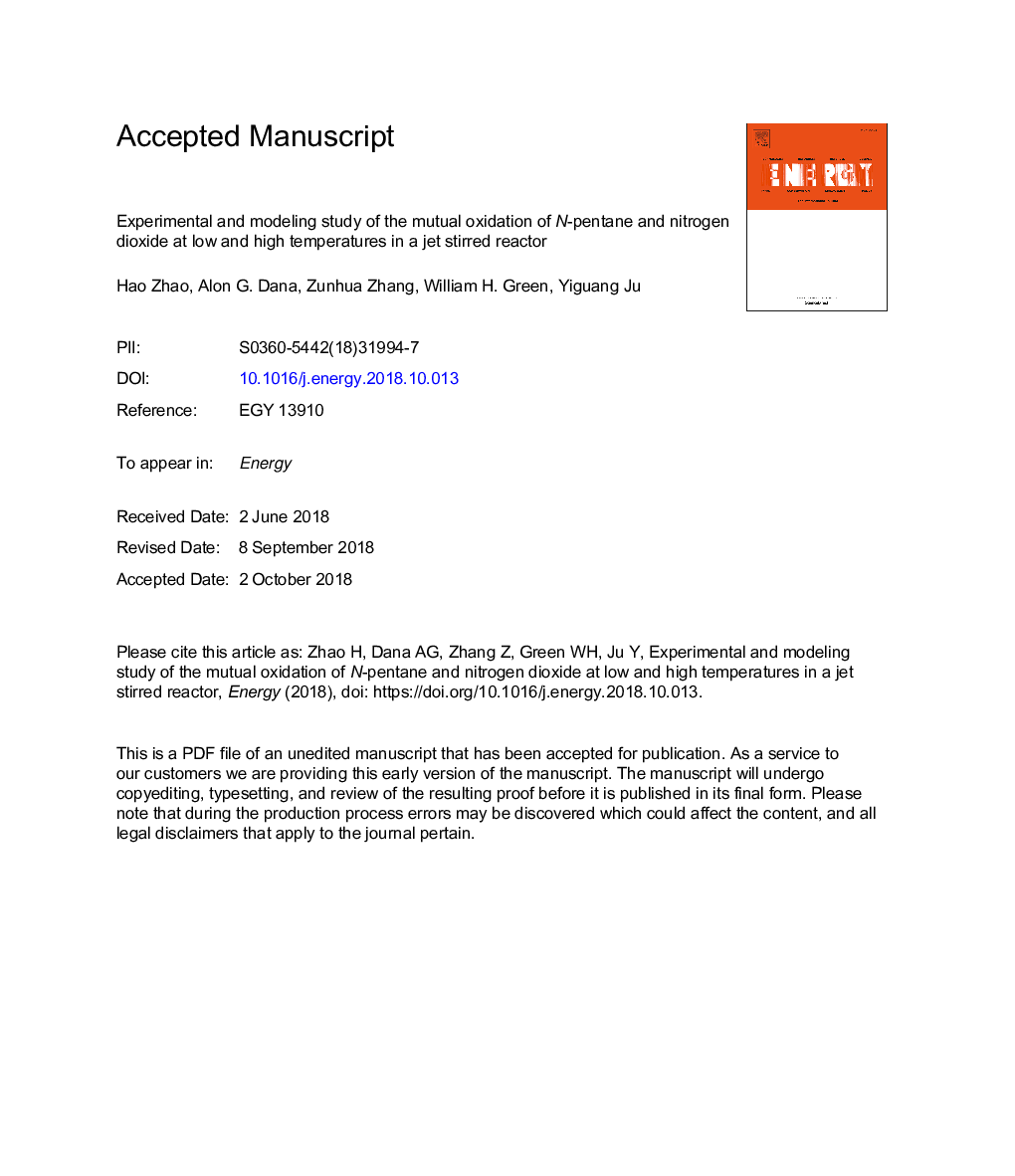| Article ID | Journal | Published Year | Pages | File Type |
|---|---|---|---|---|
| 11015685 | Energy | 2018 | 33 Pages |
Abstract
The mutual oxidation of n-pentane and NO2 at 500-1000â¯K has been studied at equivalence ratios of 0.5 and 1.33 by using an atmospheric-pressure jet stirred reactor (JSR). N-pentane, O2, NO, NO2, CO, CO2, CH2O, C2H4, and CH3CHO are simultaneously quantified, in-situ by using an electron-impact molecular beam mass spectrometer (EI-MBMS), a micro-gas chromatograph (μ-GC), and a mid-IR dual-modulation faraday rotation spectrometer (DM-FRS). Both fuel lean and rich experiments show that, in 550-650â¯K, NO2 addition inhibits low temperature oxidation. With an increase of temperature to the negative temperature coefficient (NTC) region (650-750â¯K), NO2 addition weakens the NTC behavior. In 750-1000â¯K, high temperature oxidation is accelerated with NO2 addition and shifted to lower temperature. Two kinetic models, a newly developed RMG n-pentane/NOx model and Zhao's n-pentane/NOx model (Zhao et al., 2018, Submitted) were validated against experimental data. Both models were able to capture the temperature-dependent NO2 sensitization characteristics successfully. The results show that although NO2 addition in n-pentane has similar effects to NO at many conditions due to fast NO and NO2 interconversion at higher temperature, it affects low temperature oxidation somewhat differently. When NO2/NO interconversion is slow, NO2 is relatively inert while NO can strongly promote or inhibit oxidation.
Keywords
Related Topics
Physical Sciences and Engineering
Energy
Energy (General)
Authors
Hao Zhao, Alon G. Dana, Zunhua Zhang, William H. Green, Yiguang Ju,
